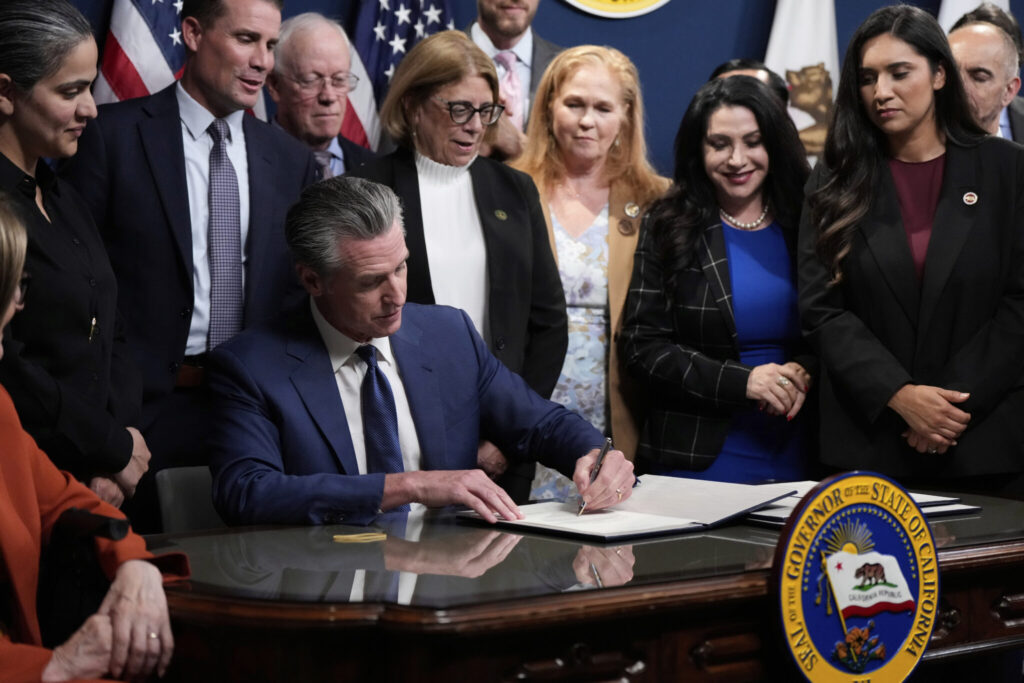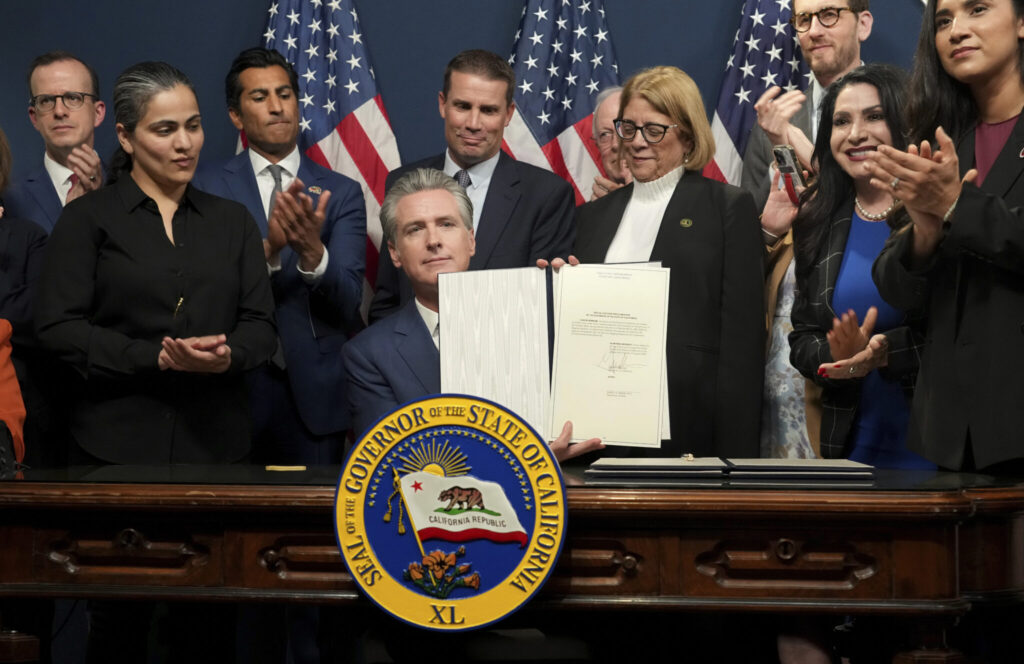Newsom Signs Law for California Redistricting Vote/ Newslooks/ WASHINGTON/ J. Mansour/ Morning Edition/ Governor Gavin Newsom signed legislation initiating a special election to let California voters decide on a newly redrawn congressional map. The move counters Texas Republicans’ efforts to boost GOP seats via redistricting. Both parties now face a high-stakes political clash ahead of the 2026 midterms.

California Redistricting Vote: Quick Looks
- California will hold a special election to approve a new congressional map.
- The map is designed to help Democrats gain up to five U.S. House seats.
- Gov. Gavin Newsom signed the bill after swift passage by state lawmakers.
- The action responds to a similar GOP-led redistricting effort in Texas.
- Republicans have filed lawsuits and called for a federal investigation.
- Newsom defended the move as necessary to “protect democracy.”
- The new California map would remain in place only through 2030.
- Former President Obama supports the move as a counter to GOP tactics.

Newsom Signs Law for California Redistricting Vote
Deep Look
SACRAMENTO, Calif. — California Governor Gavin Newsom has signed a controversial piece of legislation that will put a redrawn congressional map to voters in a special election this November, a strategic move aimed at countering a similar redistricting initiative by Texas Republicans. The newly proposed map could help Democrats flip up to five U.S. House seats in the 2026 midterm elections.
The move underscores a growing tit-for-tat battle over partisan gerrymandering, with both parties leveraging redistricting to tilt electoral outcomes. Newsom, who had previously supported California’s nonpartisan redistricting commission, framed the decision as a necessary defense against what he called an “assault on democracy” led by Republicans in Texas and other states.
A Partisan Tug-of-War
“This is not something I imagined I’d be doing six weeks ago,” Newsom said during a press conference. “But it’s a direct response to the extreme measures being taken in states like Texas.” Newsom vowed to campaign for the measure across party lines, including outreach to Republicans and independents.
The bill cleared California’s legislature largely along party lines on Thursday, with Democrats pushing it through both chambers. Newsom signed it shortly after, setting the stage for a high-profile ballot battle.
Meanwhile, in Texas, Republicans are finalizing a redrawn congressional map of their own, projected to add five GOP-friendly districts. The map has passed the state’s House of Representatives and is expected to be approved by the Republican-led Senate and signed by Governor Greg Abbott.
Legal Pushback from GOP
Republicans in California reacted strongly, promising to challenge the redistricting effort both legally and at the ballot box. GOP Assemblyman James Gallagher, the minority leader, argued that while former President Trump may have pushed for redistricting to benefit Republicans, California’s countermeasure is a dangerous escalation.
“You move forward fighting fire with fire — and what happens?” Gallagher asked. “You burn it all down.”
State Senator Tony Strickland criticized the move for undermining the state’s “gold-standard” nonpartisan redistricting system. “You’re taking the voice away from Californians,” he said.
Republicans have already filed lawsuits challenging the constitutionality of the measure and called for federal scrutiny.
National Redistricting Chess Match
With Democrats currently just three seats away from reclaiming the House majority, the redistricting war has become central to the 2026 electoral landscape. Historically, the president’s party tends to lose congressional seats in midterm elections, prompting President Trump and other GOP leaders to push redistricting in multiple Republican-led states, including Indiana, Missouri, and Ohio.
Texas Representative Todd Hunter, who authored the state’s revised map, said plainly: “The underlying goal of this plan is straightforward: improve Republican political performance.”
California Democrats pointed to Hunter’s remarks as justification for their own redistricting response.
“Do we just sit back and do nothing?” asked State Senator Lena Gonzalez. “This is how we fight back and protect our democracy.”
From Reform to Retaliation
Ironically, the new California plan represents a sharp pivot from the state’s previous approach. In 2008 and 2010, Democrats and Republicans alike supported ballot measures to create a nonpartisan redistricting commission. Newsom, then a supporter of the commission, now finds himself championing its temporary override.
“We’ll be the first state in U.S. history to let the people democratically decide their own map,” Newsom said before signing the bill.
Former President Barack Obama, who has long advocated for a national nonpartisan redistricting system, has also backed Newsom’s strategy. Speaking at a Democratic fundraiser this week, Obama called the move “smart” and “measured,” noting that voters, not politicians, will ultimately decide the outcome.
Temporary Measure, National Implications
The revised map, if approved, will only remain in effect until 2030, when California’s redistricting commission will resume its role following the next census. However, the measure could trigger a wave of similar moves in other Democratic-led states like Maryland and New York, where lawmakers are exploring mid-decade redrawing options despite existing limitations.
Unlike many Republican-controlled states, Democratic-led states typically have more checks in place, such as commissions or voter approval requirements, making rapid redistricting less straightforward.
In contrast, GOP-dominated states have acted swiftly. In Texas, Democrats attempted to delay redistricting by leaving the state for over two weeks. When they returned, they were placed under 24/7 police surveillance to ensure quorum.
What’s Next?
California’s special election will determine whether voters endorse the legislature’s bold maneuver. If approved, the map could reshape the state’s political landscape for the rest of the decade and significantly influence the balance of power in Washington.
The battle highlights the ongoing partisan arms race around redistricting—where both major parties appear increasingly willing to bend or break previous norms in pursuit of congressional dominance.







